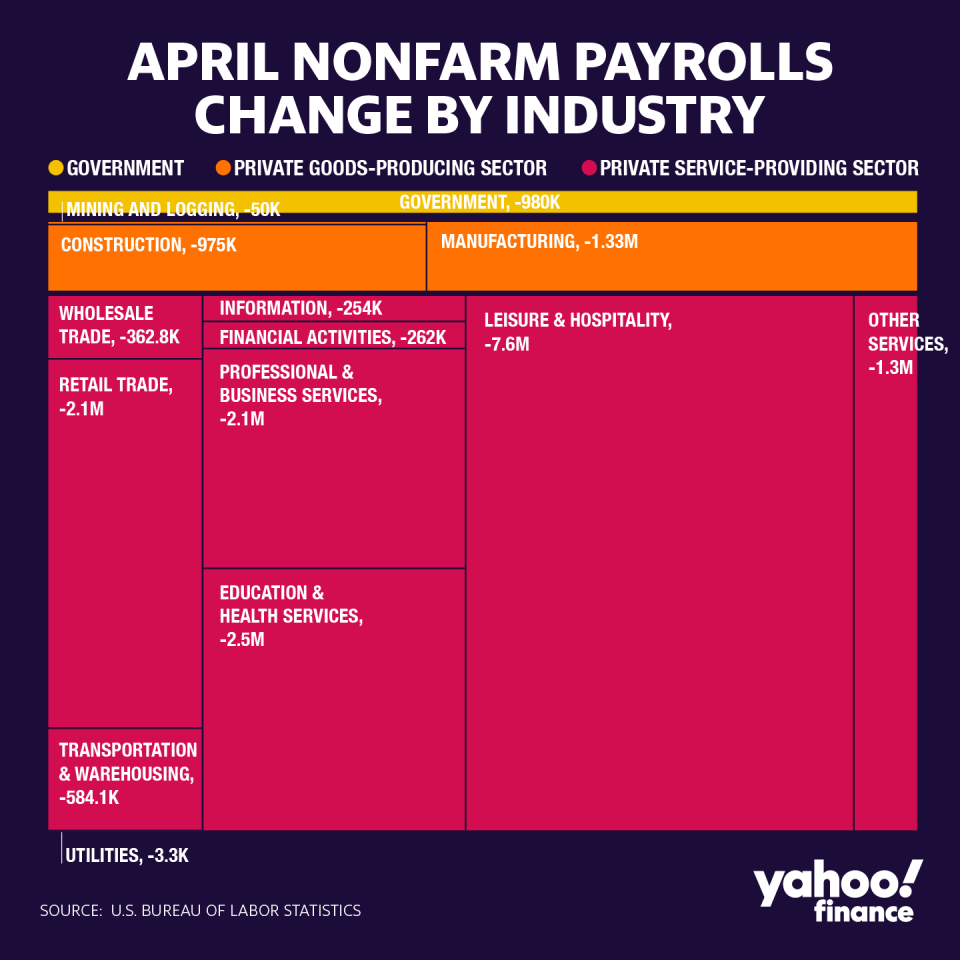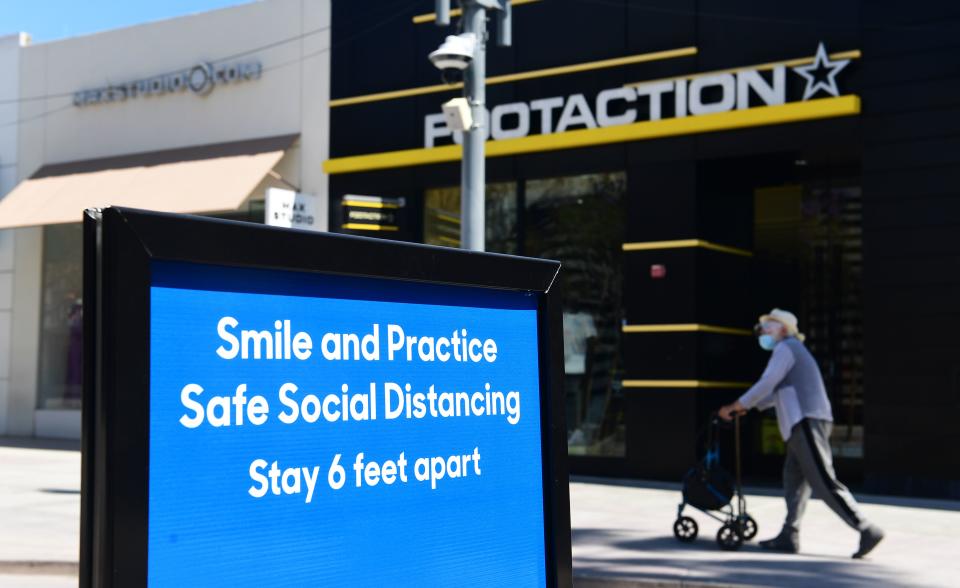Here's the real American Way and our Road to Recovery
Is the day after the worst jobs report in history too early to ask when the economy is going to recover?
Yes.
But is it too early to try to figure out how we’re going to come back?
No.
So given those two caveats, what does a Road to Recovery for America begin to look like?
I’m asking this as the pandemic continues to ravage our nation, killing municipal workers, medical personnel, patients in nursing homes, workers in meatpacking plants—and let’s be clear, potentially anybody—by the tens of thousands. Some 76,000 Americans have been felled by COVID-19 and experts say the toll could be close to double that by the end of August.
As for the economic fallout, that’s horrific in its own way. A record 20 million Americans lost their jobs last month. Unemployment spiked to 14.7%, the highest it’s been since 1939 (17.2%), and we’re likely to approach or exceed the ignominious record of 24.9% in 1933 during the depths of the Great Depression.
If 2008/2009 was the Great Recession—and it certainly will be determined that we’re in a recession now (the dismal scientists call it after the fact)—what are they going to name this? The Mild Depression?
What’s truly terrifying about the job losses is how across-the-board they are. It’s not just restaurant and hospitality workers. Manufacturing and even health care are getting hit. (No doctors’ offices and elective surgeries.) Another bad sign is that folks are self-reporting their condition of unemployment as ‘temporary’ but as Neil Irwin of the New York Times points out, it’s hard to see how so many unemployed people won’t lead to a drop in demand which will make the downturn and employment worse.

Before we get to the way forward, let’s be honest about a few things. Fact One: We were ill-prepared for this. Who could have predicted this, you ask? Actually all kinds of people did—Bill Gates and Tony Fauci to name just two—and we ignored them and/or disbanded our systems when we did prepare.
Other countries like Vietnam—which has a population of 97 million, shares a border with China, has zero reported deaths from COVID-19 and is now reopening—were ready. I know we don’t live in an authoritarian society, but who says we have to? Just take pieces of that country’s processes, like rigorous quarantine, contact tracing and testing.
And Fact Two: We have responded poorly. Even leaving aside what you think about the job President Trump has done, our federalist system doesn’t much lend itself to a crisis like this. Name another country with such strong regional autonomy as our 50 states. Then there’s our spirit of the individual thing. The American way we call it. Sure it’s what made our country great. But here’s the thing, this “you-can’t-tell-me-to-stay-inside-or-wear-a-mask-or-get-a-vaccine” stuff, doesn’t cut it. What we need is a little more “yes-ma’am-what-can-I-do-to-help-make-things-better?”
Not only do we need more testing and contact tracing, which challenges our hard-wired notions of individuality, but we have to kickstart a collectivist mindset, something we frankly haven’t tapped into since World War II. (Yes, this really is 100-year stuff.)
‘It’s important to reopen, slowly’
Louise Sheiner, policy director for the Hutchins Center on Fiscal and Monetary Policy at the Brookings Institution has written an excellent paper, “The ABCs of the post-COVID economic recovery,” which frames the various roads back. “The best economic outcome is one where the only GDP effects we have are from social distancing,” Sheiner says, speaking to the snap-back theory which she considers unlikely. The worst scenario she says would be “a depressed economy where the virus doesn't go away, or people don’t go to school for a long time, they’re out of work a long time, and we lose human capital.”
This is a time she says where the government must spend. “We might make big mistakes and say we can’t afford to do relief. I’d say we can’t afford not to.”
And so where are we right now? “We appear to be at the end of the beginning,” says Glenn Hutchins, co-founder of Silver Lake Partners and namesake of the aforementioned Hutchins Center. “Now it is time to start thinking about going back to work. I'm thoroughly convinced that sometime, let's call it at most two years from now, we will have had the right kind of capacity built to be able to live a normal life, to be able to really rebuild the American economy and get stronger and more prosperous than we were before.”
Between now and then though get ready for a time of epic change. “Our theory is that this time will dramatically accelerate changes that have slowly been happening,” says Sung Park, CEO of Boston-based Farma Genetix. “The death of apparel retail and the mall, massive failures of small higher education institutions, the acceptance of tele-medicine, the concept of remote working, the decline of the oil and automobile culture, income inequality, etc…”
And there’s more too. City living may be less desirable, ditto for working in offices, riding mass transit, going to restaurants and theaters, getting a haircut or even wearing a suit. (Here’s a favorite recent headline from the Department of Opportunism: “Denim CEO Says Dress Pants Aren’t Coming Back After Covid-19.”)
The question becomes how do restaurants make money with 50% less customers (i.e. socially distanced)? Or landlords managing offices with 50% less people working? Or city bus systems? Completely unclear. What I do know though, is that the smartest minds on the planet are working on these opportunities not problems. (You knew I was going to say that.)
It really is true though.

So how to proceed? “I think we need to go very, very slowly with reopening this economy,” Melinda Gates told me. “We should be talking about what's safe, and what is the most safe for families. We successfully kept certain parts of our economy open; our health care system, grocery stores and pharmacies. What are the next safe places? How and where might you start to open things up?
“It’s important to reopen, slowly, where you can, because we don't want to have so many people unemployed. We don't want to have kids going hungry. We don't want families struggling to put a meal on the table. But we can't do it in terms of, ‘Hey, you know, we're gonna just quickly reopen this place because it's important for the economy.’ No, it's important to keep the American people first and foremost safe. And it's a balance, and we have to talk about that balance.”
As the leader of an iconic institution, Stacy Cunningham, president of the New York Stock Exchange, is on the front lines of this kind of decision-making. “This is a very personal pandemic,” she says. “It's impacting people, both their personal safety and their personal economics at the same time. And there's going to be personal decisions by how people want to choose to re-engage with society. So while we'll open the floor [of the NYSE], everyone will also make a unique decision around when they come back. What I'm hearing from the floor broker community is a real eagerness to get back. It's a very patriotic group and they're really looking forward to getting back as quickly as possible.”
Everyone’s going to have to think differently. “The main thing we've been asking ourselves is what are all the activities we've been doing that clearly weren't value-added,” says Jimmy Haslam, CEO of the Pilot Flying J truck stop chain and owner of the Cleveland Browns. “I think we'll look at travel much differently than we did in the past. I'm cautiously optimistic that we can come out of this, as will other companies, sleeker.”
And by the way Jimmy, what about football? “That is the question I get most often,” he chuckled. “I would be cautiously optimistic that we would have games.”
And speaking of football, what about opening up colleges and universities? It’s not easy, but it is happening. In Connecticut, a committee chaired by Richard Levin, former president of Yale University, delivered a set of recommendations to Governor Lamont on how to reboot the state’s colleges and universities which employ 45,000 and account for $10 billion of spending. (FYI, college football is going to be tough to pull off this fall.)
But let’s forget about football, business and the economy for a moment. Now is a time to consider much more than that. “What you hope is as you go through this, people are reflecting on things that are most important in their lives,” says former Ohio Governor John Kasich. “We’ve heard about: “keeping up with the Joneses.” To do what? To achieve what? To accomplish what? I think there are many, many more people appreciating family, appreciating silence, and moments of personal reflection. I think that’s happening. Coming out of this I would love to think the very spirit of the country, who we are, can be renewed.
Yes governor, that’s how we’re going to get through this.
And that, is the real American way.
This article was featured in a Saturday edition of the Morning Brief on May 9, 2020. Get the Morning Brief sent directly to your inbox every Monday to Friday by 6:30 a.m. ET. Subscribe
Andy Serwer is editor-in-chief of Yahoo Finance. Follow him on Twitter: @serwer.
Read the latest financial and business news from Yahoo Finance
Read more
